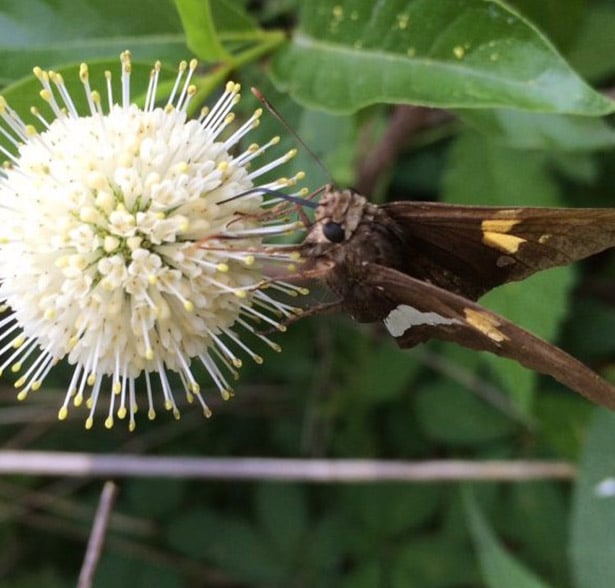She’s a beauty! Her full name is Cephalanthus occidentalis, and yes I know, it’s a mouthful.
My friend just calls her “Button” when we see her in the woods along the creek. But, If that’s too casual, you can call her Buttonbush (but write down her full two-word botanical name because someday, you might need it).
She’s a local gal, a true Missouri native through and through. She likes it hot or, cold, and humid and every combination of them but she’s not real fond of extended dry period. (It’s hard on her appearance and it’s tough on her roots as well and believe me, we all need our roots.)
If you let her show her pretty leggy bark you get more than year round interest from the people lookers, you may also get oversize creamy white flowers just in time for wedding pictures, graduation parties and all that is fun in June!
Those sweet soft round globes are enjoyed by many major pollinators including big and little butterflies, nectar moths and “too busy to care about you” Bumble bees. Even a passing hummingbird will take a power shot of nectar juice while on wing.
After her prime she still manages to look good in Autumn. Sometimes she even shows a little fall color. Come winter, songbirds flock to her for her seeds are quite tasty treat.
Buttonbush, also known as honeyball, is pretty common throughout Missouri and fairly recognizable even in winter as she develops a lovely rounded silhouette with maturity.
The flowers are sweetly scented. Blooming sometimes for as long as four weeks in early summer, she offers both food and drink for many pollinators from Missouri’s nine primary categories of pollinators. Her seeds are also a food source for many song birds. In the Museum’s pollinary park we have a couple buttonbushes.
Although a buttonbush likes wet sloppy clay soil, she grows fine in average soil and even can grow in drier places as long as she is watered during extended dry periods. She likes sun or light shade.







 BACK TO ALL POSTS
BACK TO ALL POSTS
